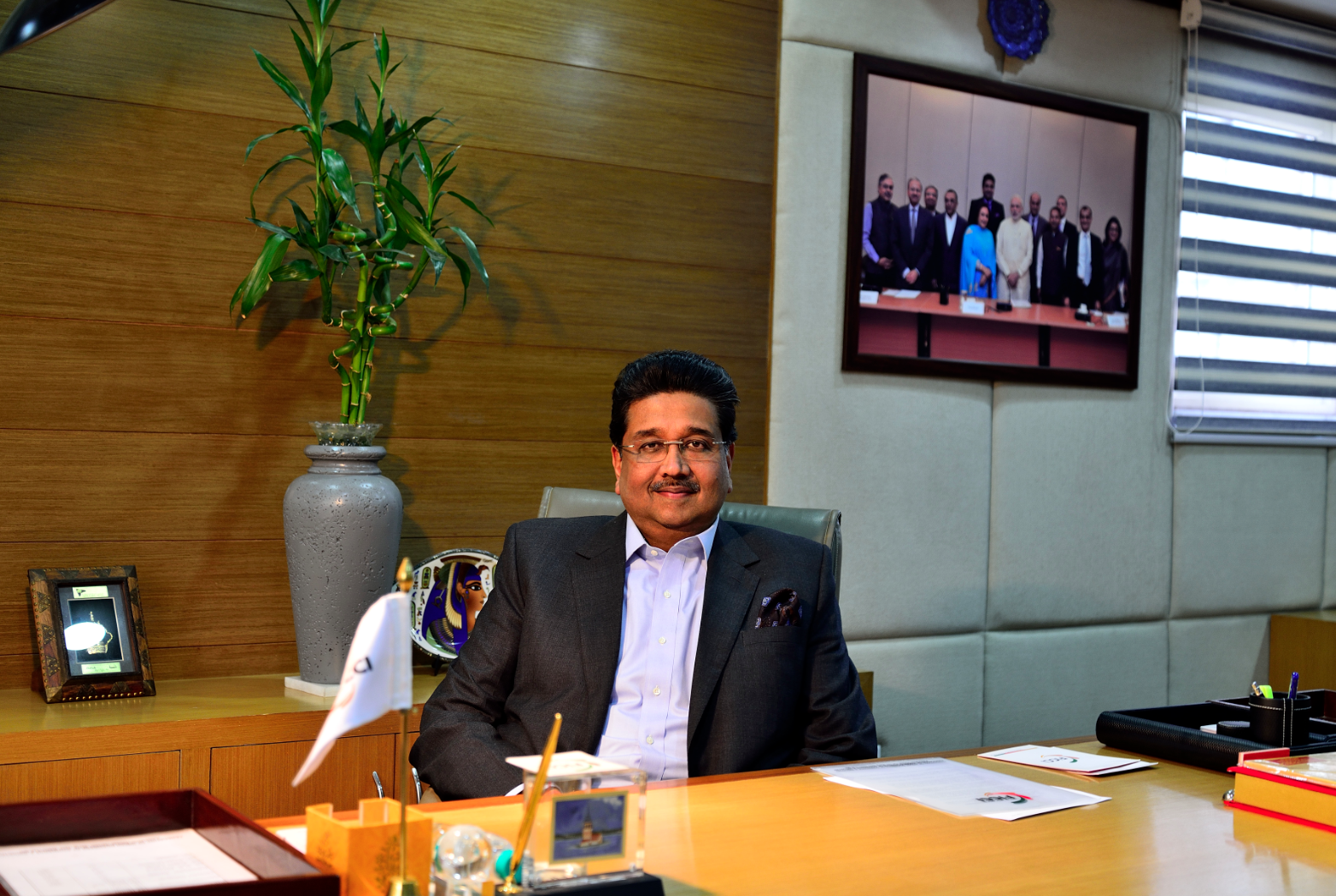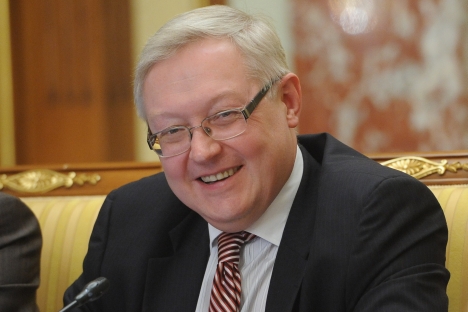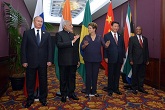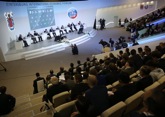Transforming the business potential of BRICS

Harshavardhan Neotia, FICCI President.
Getty ImagesOver the past few years, FICCI has been playing an active role in enhancing India’s economic cooperation with other members of the BRICS group. Apart from having a strong bilateral agenda with each of the BRICS nations FICCI, with the support of partner institutions in BRICS countries, organizes regular business delegations and holds trade and investment workshops, facilitates B2B meetings and contributes to government to government dialogue. Organizing the BRICS Trade Fair, the first such event in the history of the five-nation group of emerging economies, is yet another step forward in enhancing trade between the member nations, Harshavardhan Neotia, President of FICCI believes.
Mr. Neotia, India is hosting the BRICS summit and related events for the second time. What has changed in the perception of BRICS from 2012 and now, could you point out, both in India and globally?
The BRICS nations have evolved significantly over the years. Today, BRICS countries are playing a far more important role in the global economy. They have spoken with one voice about the most important global economic and financial challenges like co-ordination of monetary and fiscal policies, macro prudential regulations, economic development, and so on. Formation of the New Development Bank and establishment of the Contingent Reserve Arrangement has only strengthened BRICS as a grouping. BRICS is being increasingly recognized as a reckoning global force economically as well as on the socio-developmental front.
BRICS as a concept (whether economic or geopolitical) is often criticized by some economists, political leaders in the West and even in India. How does Indian business see BRICS? Do you personally believe in the idea of BRICS and why?
At present, the BRICS countries represent over three billion people and account for about 43% of the world population. Their economies have a combined nominal GDP of $16 trillion, which is equivalent to about 23% of the gross world product, with an estimated $4 trillion in combined foreign reserves. It is widely expected that the BRICS economies are well placed to become the most dominant economies in the world by 2050.
The effectiveness of the BRICS lies in their relative strength and resilience especially in these tough economic situations. Some of the economies are facing a difficult period but these are phases of an economic cycle. From a longer-term perspective, one cannot deny the strengths BRICS exhibit and we see it as an excellent platform where leaders can discuss global challenges and co-ordinate their actions within the global institutions.
The volumes of trade and investments between BRICS countries are traditionally quite low. What are the short-term and long-term projections?
The BRICS countries have witnessed increased trade flows amongst them. Trade amongst them was US$168 billion in 2008 and currently stands at US$242 billion (2015). There is immense scope for increasing trade amongst BRICS. The BRICS Governments as well as the BRICS Business Council have been constantly working towards enhancing trade and investment flows. The countries are taking steps towards simplifying and increasing the efficiency of administrative procedures; strengthening bilateral and multilateral cooperation, promoting dialogue on BRICS countries' domestic investment policy and on approaches to investment agreements, as well as strengthening cooperation among organizations responsible for trade and investment facilitation. This year, under the Indian Presidency of BRICS, the first BRICS Trade Fair is being organized, where a large number of companies across several sectors are going to participate. We are expecting huge business being transacted during this three-day event at New Delhi.
India has been trading extensively with China, among all BRICS countries. What are the opportunities for India in increasing trade with Brazil, Russia, South Africa, and in which spheres? What are the challenges?
India is working towards strengthening its trade relations with all BRICS countries be it China, Brazil, South Africa or Russia.
India and South Africa have identified manufacturing, mines and minerals, IT, renewable energy, pharmaceuticals, tourism, defence, agro-processing, human resource development, infrastructure development and financial service as focus areas for greater co-operation.
Brazil is one of the important trading partners for India in the LAC region and India’s trade with it has increased substantially over the years. Brazilian companies have invested in automobiles, IT, mining, energy, biofuels, footwear sectors in India, while the Indian companies have invested in such sectors as IT, pharmaceutical, energy, agri-business, mining, engineering/auto sectors in Brazil.
Russia is a long standing partner of India. There has been some decline in bilateral trade lately but trade is expected to pick up. The countries have set a target of bilateral trade of US$ 30 billion by 2025. Russia imports pharmaceuticals, tea, coffee and tobacco, boilers, machinery and mechanical appliances, organic chemicals and electrical machinery and equipment while India’s import basket from Russia comprises of pearls, precious and semi-precious stones & metals, nuclear power equipment, electrical machinery and equipment, mineral oil & products, iron & steel, and optical, precision and surgical equipment.
There are areas where deeper cooperation is expected between India and the other BRICS nations. The Chinese side has shown a lot of interest in the infrastructure sector particularly the railways. Russian side is looking for collaboration in areas of defence, aviation and high-technologies. Brazil is keen to partner India in the renewable energy sector and South Africa has offered us access to their rich mineral bases besides collaboration in heavy haul mining machinery.
How can BRICS financial institutions, including NDB, facilitate larger trade within BRICS, both in terms of numbers and in terms of geography?
The BRICS governments along with the New Development Bank and the BRICS Business Council have been working on facilitating greater trade and investment flows. Important among these is the plan to promote trade in local currencies. Steps have also been taken by the development banks of the five countries to create mechanisms that would support intra-BRICS trade. FICCI, in fact, in partnership with the EXIM Bank of India has organized a series of capacity building programmes for Indian enterprises to make them aware about the various trade instruments and financing frameworks that are available to trade more with BRICS countries. The network of Export Credit Agencies, which is led by ECGC from India, is also playing an important facilitating role in promoting trade.
The participation of the five BRICS countries in the WTO reveals various priorities when it comes to international trade. How will BRICS cooperation influence their representation in WTO and what can India gain from BRICS in its WTO trade negotiations?
BRICS countries have been active members in the multilateral trade regime since the establishment of the GATT and creation of the WTO. Historically, they have assumed a prominent role in defending the interests of developing countries, especially during negotiation rounds. The BRICS members have also backed the need to curb protectionist practices. Meeting on the sidelines of G-20 Summit recently, the BRICS leaders clearly highlighted the importance of WTO and agreed to facilitate market inter-linkages and an inclusive, rules-based and open world economy.
Since India is presiding over BRICS this year, one cannot skip the questions about India’s remarkable growth. The numbers are stunning, although some experts are quite critical of those figures. What are the main challenges for India’s economy, India’s growth and how successfully the country is tackling them?
India has been consistently faring well on the macroeconomic front and we believe it would continue to do so in the foreseeable future. While growth has moderated in the first quarter of the year, growth momentum would pick up in the second half of the year. FICCI’s Economic Outlook Survey estimates growth to be 7.8% in 2016-17, which is actually higher than the projection made in our previous survey indicating greater optimism with regard to our overall growth prospects.
Consumer demand which has been weak is expected to pick up with good monsoons and as benefits of the pay commission award percolate.
Reform initiatives undertaken by the government and mega initiatives such as ‘Make in India’, ‘Digital India’ and ‘Skill India’ would usher in a period of high and sustained growth.
How could BRICS countries participate in such initiatives like “Make in India”, “Digital India”? Are there any examples of cooperation between India and its BRICS peers on this front?
India has sought participation of BRICS countries in its flagship initiatives such as ‘Make in India’, ‘Smart Cities’, ‘Skill India,’and ‘Digital India.’ There have been regular dialogues and exchanges with our BRICS partners on these areas. Russia was the first country to invest under the ‘Make in India’ initiative in the defence sector. HAL has entered into a Joint Venture with Rostec of Russia to manufacture Kamov choppers in India , while Uralvagonzavod and the Kalyani Group have agreed on joint production of self-propelled artillery within the framework of the ‘Make in India’ program.
Our government is moving to address some outstanding issues and a lot of measures have been taken, including steps to improve ease of doing business by simplifying procedures, bureaucratic overhaul, easing investment norms for a number of sectors and introduction of an investor friendly tax regime amongst others.
The New Development Bank (NDB) has completed its first year of operations. In your opinion, what are the main achievements so far?
The establishment of New Development Bank has been a key milestone for not just BRICS economies but for all emerging economies and developing countries. It is a testament of coming of age of these countries in the world of development finance. In its one year since inception, the NDB has put in place all the major operational policies and procedures of the Bank. The NDB board has approved the first set of projects with a total commitment of US $811 million. Through its first set of loans, the Bank has established its credentials as an institution that supports green and sustainable infrastructure.
Why was renewable energy given such priority? What are the challenges BRICS countries face trying to build sustainable energy capacity, in your opinion?
The main objective for setting up the New Development Bank was to help the member countries by contributing to the development plans for projects that are socially, environmentally and economically sustainable. The New Development Bank has played a very important role in facilitating investments in renewable energy, which is critical for reducing carbon emissions at present. Amongst BRICS, tackling climate change and the need to manage diminishing fossil fuel reserves are, today, two of the biggest challenges.
BRICS countries are planning to set up a credit ratings agency to challenge western hegemony in rating the countries as they feel such rating are “politically motivated”.Is there any clarity on when such agency may be established, what has to be done to make it credible enough? How can it help Indian business and business from other BRICS countries?
It is widely believed that the scale of infrastructure investment required in emerging market economies is immense at present. It is estimated that multilateral banks like NDB, AIIB etc. are planning to disburse close to $10-15 billion of loans every year over the next few years in the emerging market economies.
Recognizing the current constraints in ratings, a proposal for institutionalizing a BRICS led Rating Agency is being examined by the BRICS countries. Going forward, we believe that with the gradual increase in the participation of emerging-market funds in infrastructure build-outs among emerging market economies, a credit rating agency whose evaluation is reliable, transparent and independent will proactively carry forward the development agenda of the emerging market economies. We are quite optimistic that a BRICS Rating Agency will be established soon.
In conclusion, what are the most effective mechanisms that BRICS could create for nurturing cooperation and mutual growth?
BRICS has made laudable efforts to enhance co-ordination in the global arena and this is well established in various multilateral and pluri-lateral initiatives. BRICS nations have worked together in promoting stability and reliability of the global financial system through the BRICS Contingent Reserve Arrangement (CRA), through which countries have agreed to provide short-term liquidity support to members through currency swaps to help mitigate any external contingency. The New Development Bank is another notable achievement. BRICS is also discussing a framework for BRICS e-commerce cooperation to promote cross-border e-commerce. Intra-BRICS cooperation is now expanding to encompass new areas.
All rights reserved by Rossiyskaya Gazeta.
Subscribe
to our newsletter!
Get the week's best stories straight to your inbox




